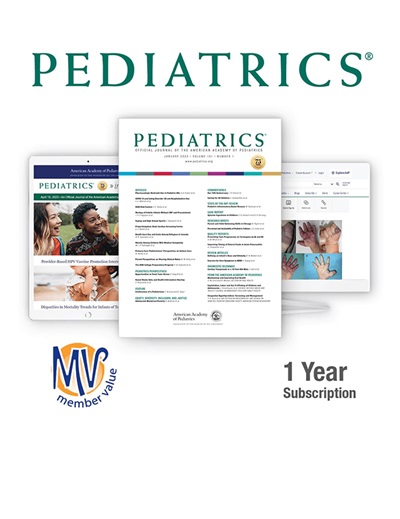Age, Adverse Childhood Experiences, and Health Care Utilization.
IF 6.2
2区 医学
Q1 PEDIATRICS
引用次数: 0
Abstract
OBJECTIVES To assess whether the association of adverse childhood experiences (ACEs) with pediatric health care utilization differs by age. METHODS In this retrospective cohort study, we included patients completing primary care ACEs screening between January 2020 and September 2021. Pediatric ACEs and Related Life Events Screener Part 1 scores were categorized 0, 1 to 3, or ≥4 (none, low, and high, respectively). Two multivariable logistic regression models assessed emergency department (ED) and inpatient utilization across all ages 6 months after screening. RESULTS Among 37 315 patients, 15.7% visited the ED and 2.5% were hospitalized within 6 months of ACEs screening. Using no ACEs as the reference, infants and toddlers with any ACEs had lower odds of ED and inpatient utilization, whereas older children with any ACEs had higher odds of ED (age-low ACEs: 0.04, P value < .001; age-high ACEs: 0.08, P value < .001) and inpatient (age-low ACEs: 0.06, P value < .001; age-high ACEs: 0.15, P value < .001) utilization and increased each successive year of age. CONCLUSIONS The association of ACEs with health care utilization is dependent on age and is more complex than previously described. These trends may inform specific therapeutic strategies for pediatric patients by age.年龄、童年的不良经历和医疗保健的使用。
方法在这项回顾性队列研究中,我们纳入了 2020 年 1 月至 2021 年 9 月间完成初级保健 ACEs 筛查的患者。儿科 ACEs 及相关生活事件筛查第 1 部分得分分为 0、1 至 3 或 ≥4(分别为无、低和高)。两个多变量逻辑回归模型评估了筛查后 6 个月所有年龄段的急诊科(ED)和住院病人的使用情况。结果在 37 315 名患者中,15.7% 的人在 ACEs 筛查后 6 个月内就诊于急诊科,2.5% 的人住院治疗。以无 ACE 为参照,有任何 ACE 的婴幼儿使用急诊室和住院的几率较低,而有任何 ACE 的大龄儿童使用急诊室和住院的几率较高(低年龄 ACE:0.04,P 值 < .001;高年龄 ACE:0.08,P 值 < .结论:ACE 与医疗保健使用的关系取决于年龄,而且比以前描述的更为复杂。这些趋势可能为针对不同年龄段儿科患者的特定治疗策略提供参考。
本文章由计算机程序翻译,如有差异,请以英文原文为准。
求助全文
约1分钟内获得全文
求助全文
来源期刊

Pediatrics
医学-小儿科
CiteScore
12.80
自引率
5.00%
发文量
791
审稿时长
2-3 weeks
期刊介绍:
The Pediatrics® journal is the official flagship journal of the American Academy of Pediatrics (AAP). It is widely cited in the field of pediatric medicine and is recognized as the leading journal in the field.
The journal publishes original research and evidence-based articles, which provide authoritative information to help readers stay up-to-date with the latest developments in pediatric medicine. The content is peer-reviewed and undergoes rigorous evaluation to ensure its quality and reliability.
Pediatrics also serves as a valuable resource for conducting new research studies and supporting education and training activities in the field of pediatrics. It aims to enhance the quality of pediatric outpatient and inpatient care by disseminating valuable knowledge and insights.
As of 2023, Pediatrics has an impressive Journal Impact Factor (IF) Score of 8.0. The IF is a measure of a journal's influence and importance in the scientific community, with higher scores indicating a greater impact. This score reflects the significance and reach of the research published in Pediatrics, further establishing its prominence in the field of pediatric medicine.
 求助内容:
求助内容: 应助结果提醒方式:
应助结果提醒方式:


